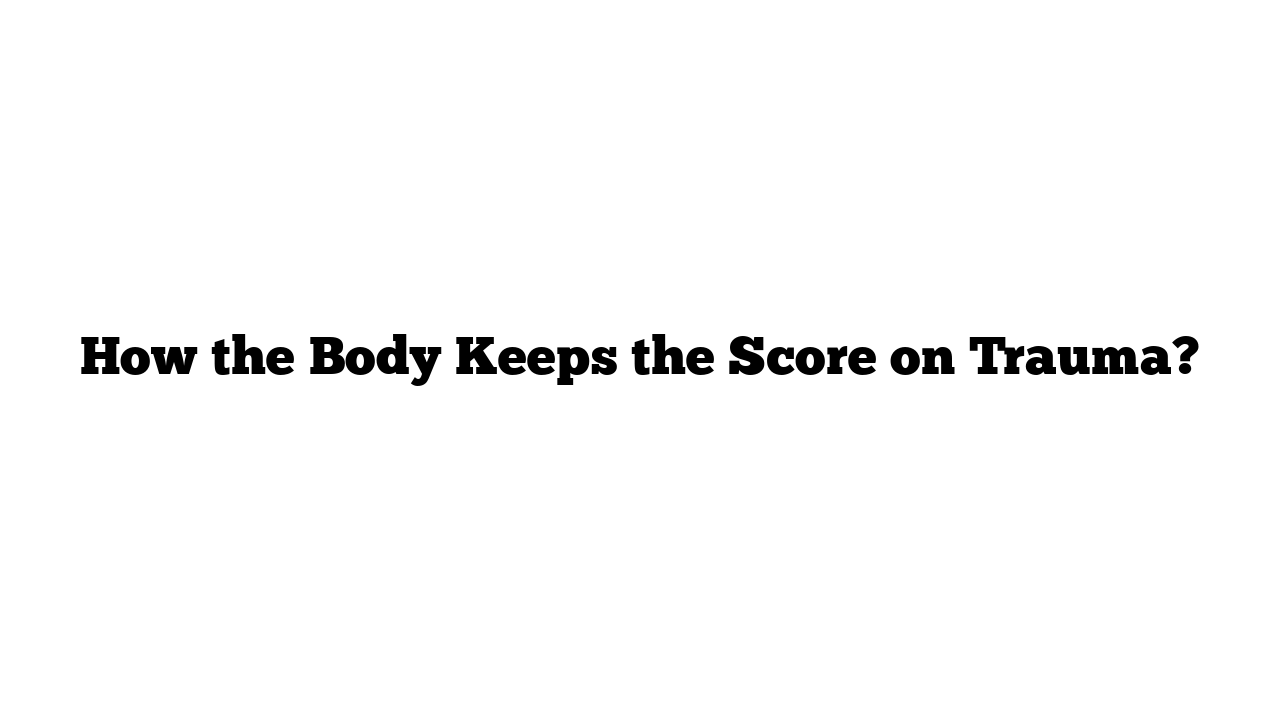Trauma is so widespread that if you think you’ve never encountered it, you might just not be looking closely enough. We meet people who fly off the handle, who shut down, or who are difficult to connect with. It’s rare to find a family without at least one member struggling with addiction or other significant issues. I often ask in my lectures, “Are there any normal people from normal families in the audience?” Occasionally, a couple of hands go up, and I joke, “Can I join your family for Thanksgiving? I’ve never been to a normal family.”
I’m Bessel van der Kolk, a psychiatrist and neuroscientist. I’ve been studying trauma for about 50 years, treating various traumatized populations across different countries, and I’m the author of The Body Keeps the Score.
The Body Keeps the Score
It’s crucial to recognize that not every mental health professional fully understands trauma. The mainstream psychiatric approach often suggests there’s something inherently wrong with you that needs fixing. This perspective differs significantly from how we approach trauma.
Around 1978, after the Vietnam War, a group of us at the VA began defining trauma and understanding its effects. The first time I met Vietnam veterans, I was struck by their constant references to fallen comrades. Their hearts were still with those who were no longer around. Many struggled to connect with their partners or engage meaningfully in the present. These men, once smart and competent, seemed like shadows of their former selves.
They often appeared passive until something triggered them, leading to explosive anger. It was clear something had happened that made it hard for them to manage their emotional responses.
My colleagues and I started to explore how what these veterans experienced differed from what’s described in psychiatry textbooks. I found a book written in 1941 by Abram Kardiner, who studied soldiers from World War I. He described their experiences as a “physioneurosis,” suggesting that their bodies continued to relive the traumatic events, manifesting through images, behaviors, and physical sensations. This became central to our understanding of PTSD.
The Nature of Trauma
Trauma is far more common than we initially thought. In America, one in five women has a history of sexual assault, and many men do as well. About one in four children experience severe physical abuse, while one in eight witness physical fights between their parents. While people often think of military trauma, the level of trauma experienced by inner-city kids can be unimaginable.
Trauma affects how we perceive experiences. When a traumatic event occurs, it enters through our senses and reaches a primitive part of our brain that assesses danger. Trauma becomes embedded when we feel powerless to stop the impending harm, triggering our fight-or-flight response.
The lingering effects mean that we often react to minor stressors as if we’re in imminent danger. This can lead to hyperreactivity; for instance, someone might experience road rage or overreact to minor annoyances at home. Most people are unaware that these reactions are rooted in past experiences. Although the event itself is over, the emotional responses persist.
The Big Challenge
A significant challenge in treating trauma is helping people feel safe in their own bodies. Traditionally, mental health approaches have dismissed the realities of people’s lives. Only recently have we started discussing the impacts of poverty, racism, and unemployment on mental health. Often, the response has been to label individuals as flawed and attempt to fix them.
When someone visits a mental health practitioner who doesn’t grasp the nature of trauma, they may be treated with medications or cognitive-behavioral therapy, which often isn’t effective.
Research shows that building relationships where people can express their feelings—discussing their pain, guilt, and the origins of their emotions—can be incredibly helpful. It’s crucial to develop an understanding of one’s experiences and to recognize that reactions are often rooted in past traumas.
Self-compassion is vital. Knowing that your responses are understandable and linked to unresolved past experiences is an essential part of recovery. Many of us are survivors of various traumas, some more severe than others.
When asked about my legacy, I hope our society becomes more aware of trauma and takes the necessary steps to support those who grow up in adverse conditions. It’s about fostering the development of healthy brains and minds, enabling everyone to become fully functioning members of society. That’s our significant challenge.
